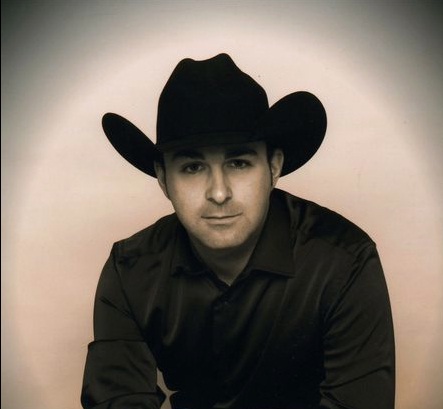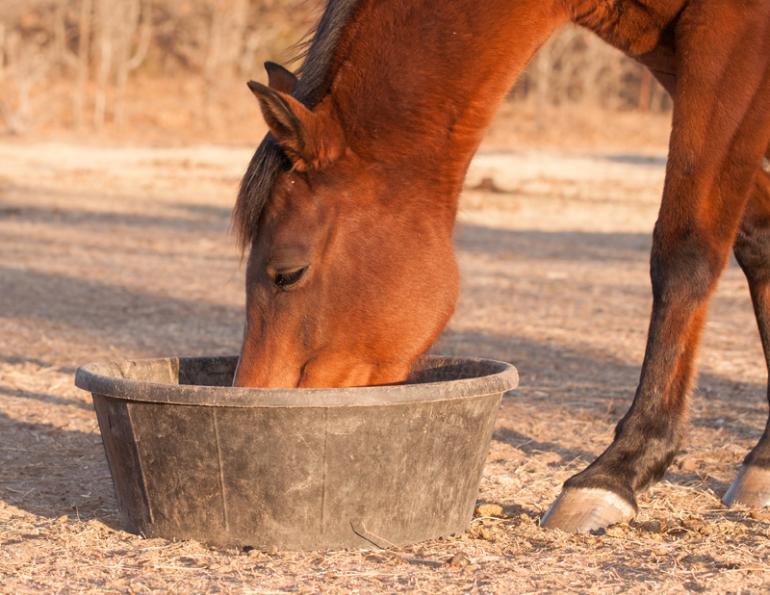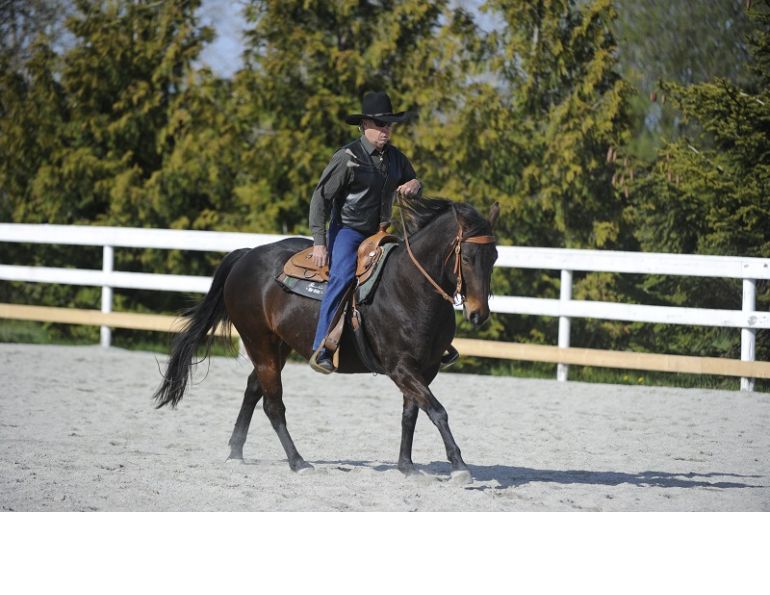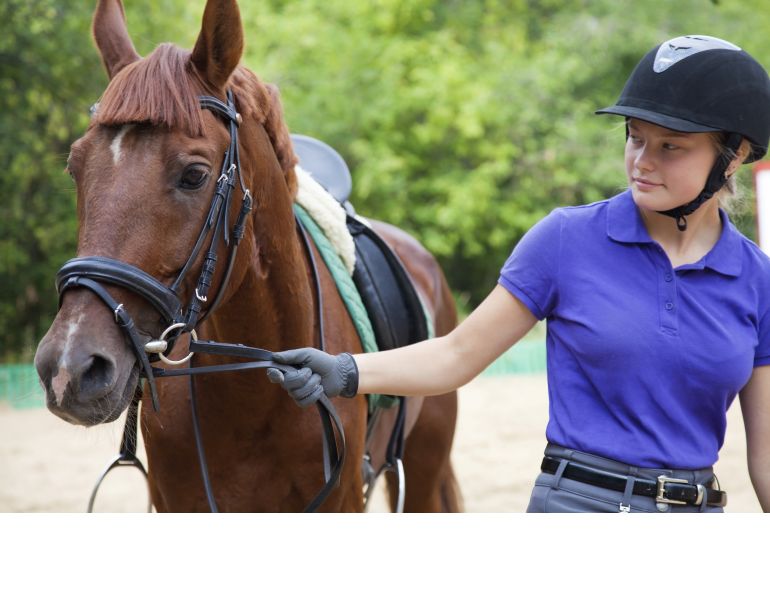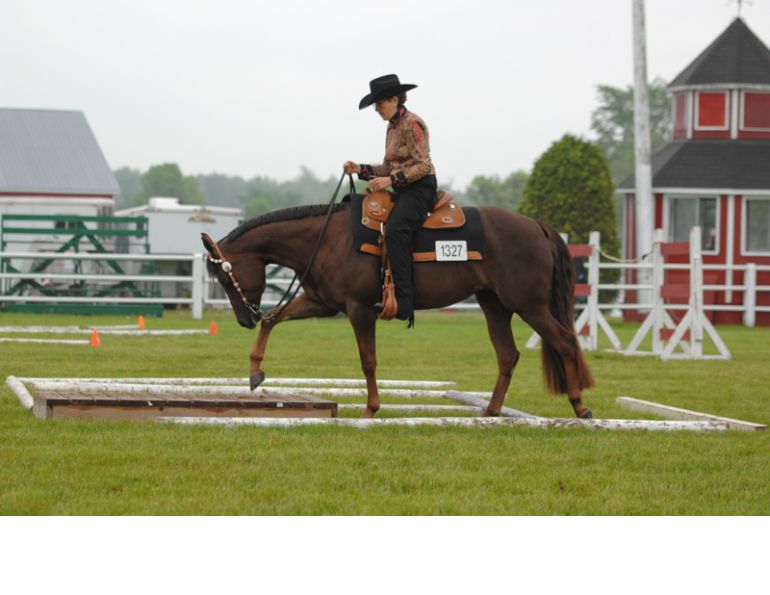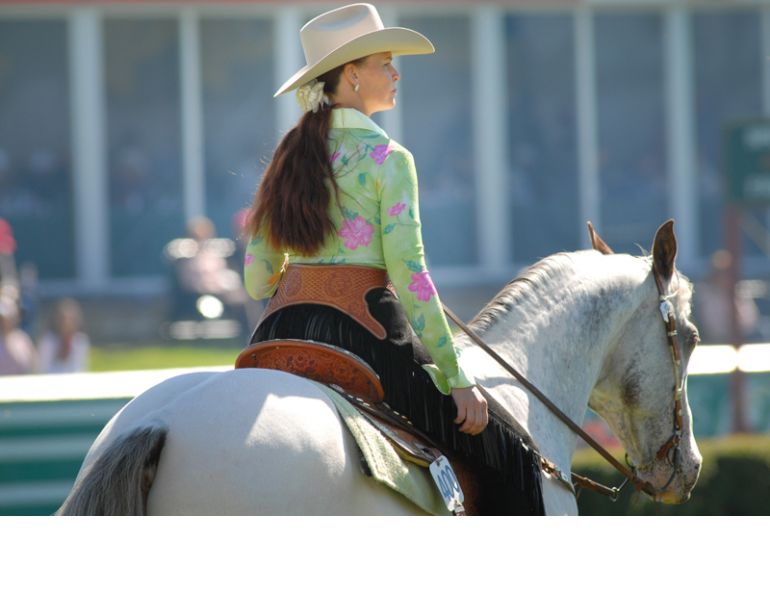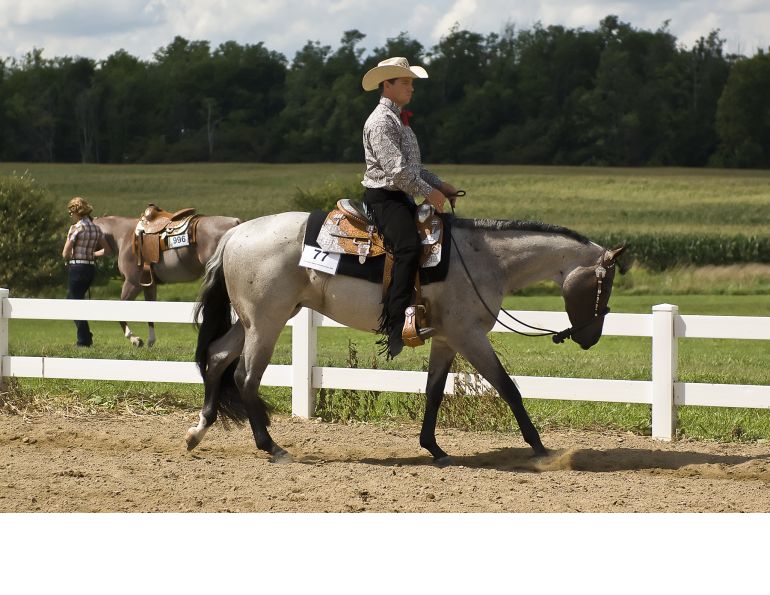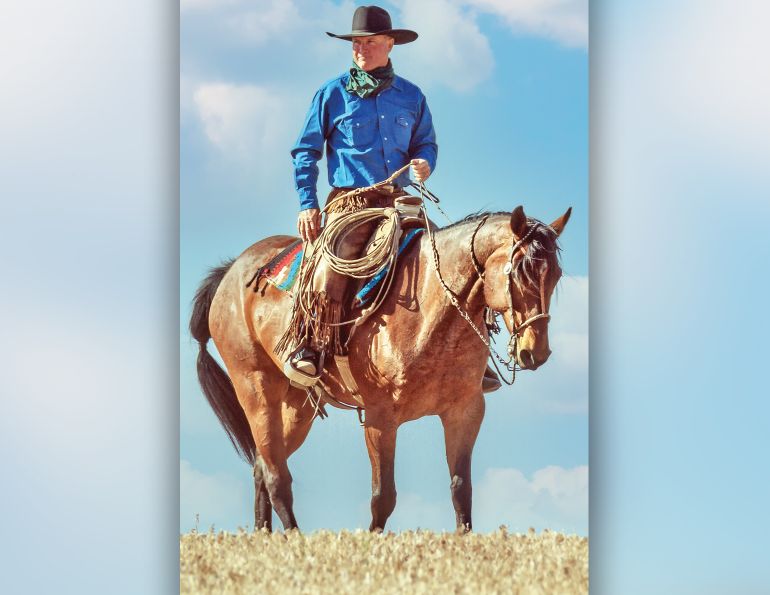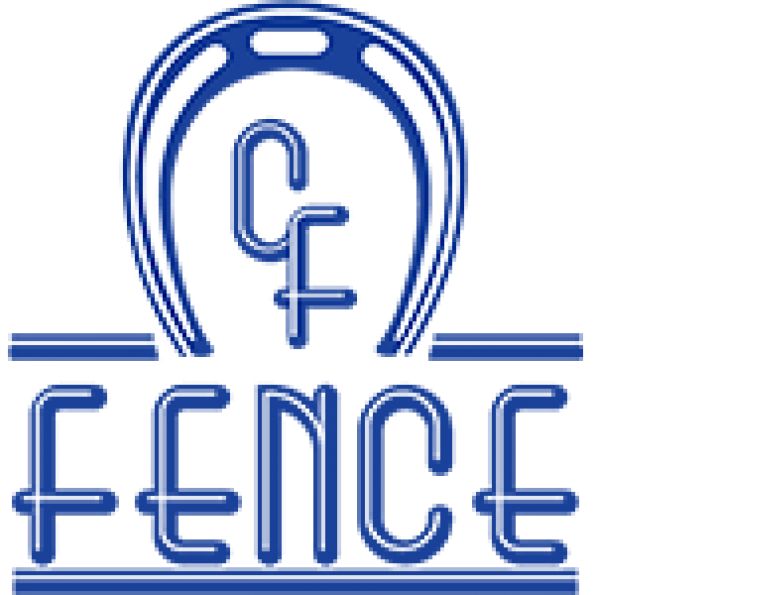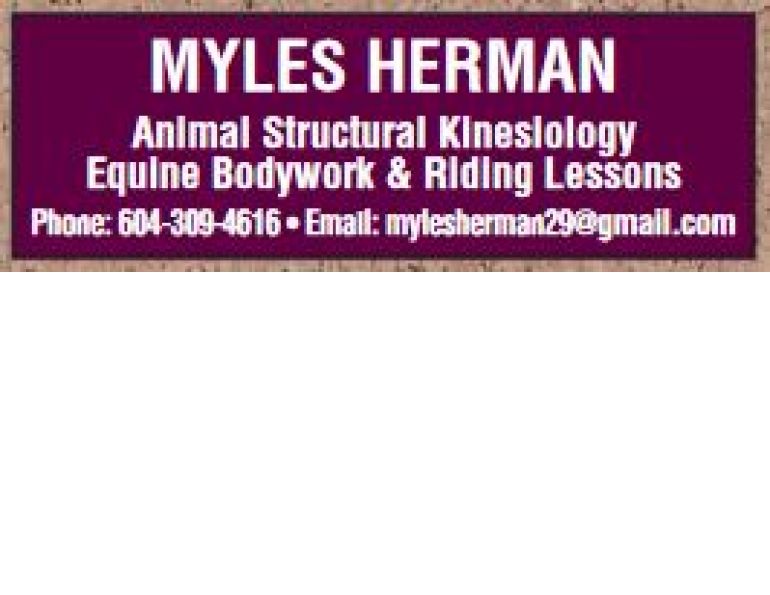With Loris Epis
By Jess Hallas-Kilcoyne
There are a number of common misconceptions about what it means to “collect” a horse.
“It’s not just about putting the horse’s head down,” clarifies top reining trainer and competitor Loris Epis, “but more to contain the rib cage between your legs and flex the horse’s back in order to have control through forward motion.”
It's also not about slowing the speed or tempo of the gait. On the contrary, Loris emphasizes that a good forward rhythm and impulsion are essential to collection. “Do not take away the horse’s natural way of movement or fluidity,” he cautions.
Instead, think about collection as occurring when the horse is moving with adequate forward impulsion while remaining soft, supple, and responsive.
“To me,” says Loris, “collection is a well-balanced feel of softness and control through the horse's entire body. Collection comes from softness in the horse’s face, but in order to achieve that, we must have softness in the horse’s sides as well,” he says. “I teach all my horses to guide everywhere in the pen using my hands with a good rhythm and flexion on each side. As soon as I have control and softness, I’m ready to develop the concept of collection in the horse’s brain and body.”
|
Exercise #1: Circle, Straighten, Repeat |
“I teach collection only in a smooth snaffle because I believe that softness comes from softness,” Loris continues. “However, a reining horse must be shown with one hand only, so in this case I will use a [curb] bit instead of a snaffle.”
When it comes to introducing the concept of collection to green horses, Loris recommends the following exercise, which can be ridden in a snaffle bit.
Exercise #1: Circle, Straighten, Repeat
First at a jog, then at a lope, ride large around the arena or on a large circle, keeping the horse moving forward with the use of your legs. Then take him onto a small circle and, without losing the forward impulsion, encourage him to collect.
“Any time you want to ask for collection, push more with your legs and slowly take a contact with the horse’s mouth,” says Loris. A green horse will likely resist, but just remain steady and consistent in your aids until he yields.
On the small circle, use both your hands and legs to keep the horse’s shoulders and rib cage in the correct, vertical position – no dropping or pushing. As soon as you achieve a feeling of collection, however slight, release the pressure and take your horse onto a bigger circle or, even better, a straight line. Repeat this exercise over and over until you achieve more consistent collection. You’ll recognize the feeling of collection when “you feel no resistance in your hands or on either side of the horse, still with a consistent forward motion,” says Loris, who really emphasizes the importance of release in developing collection.
Collection is not about pulling to arch the horse’s neck. In true collection, the horse moves forward into the contact in response to the rider’s aids (pressure), and remains willing to execute any maneuver the rider requests even after the aids are relaxed (release).
|
The more advanced reining horse should collect simply by you lifting your hand on the reins. |
The concept of release is central to this second exercise, which is more suited to advanced horses being ridden in a curb bit.
Exercise #2: Collect and Release
At the lope, lift the reins up above the saddle horn with one hand. As you push with your legs, let your free hand slide down the reins until it’s touching the horse’s mane. A more advanced horse will interpret this as you asking for collection. Your legs should be in contact with the horse’s sides, keeping the horse soft and responsive. Keep the horse in a collected position until you feel consistent softness in the horse’s mouth and sides, then release. “Make sure to drop your hand right down on the horse’s neck,” says Loris, calling it “an extreme release.” Repeat this exercise until your horse will collect just by you lifting your hand.
Timing the pressure and release takes skill and experience. “If you are not sure of your timing, keep in mind to stay soft and slow your hands,” Loris suggests. “When the horse flexes his neck toward his chest…that is a great time to release.”
Ultimately, collection in the reining horse comes down to willingness, but, as with any training, patience and empathy are the keys to success. “Remember to take your time with each step of the training,” says Loris. “I believe that if you consider the horse’s point of view, everything will come much more clearly.”
Main Article Photo: Usien/Wikimedia Commons
This article originally appeared in the November 2012 issue of Canadian Horse Journal as part of "3 Takes on Training: Collection, Part 1".
|
|
About Loris Epis Italian born Loris Epis specializes in the starting, training, and showing of reining horses. With over $115,000 in lifetime earnings, Loris’s titles in 2011 include National Reining Horse Association Open Level 1 & 2 Futurity Reserve Champion, All American Quarter Horse Congress Open Futurity Reserve Champion, and Canadian Classic Open Futurity Champion. He was also the 2012 Ontario Reining Horse Association Open Champion. Loris operates Epis Performance Horses out of Witt Quarter Horses in Lynden, Ontario. www.EpisReiners.com |



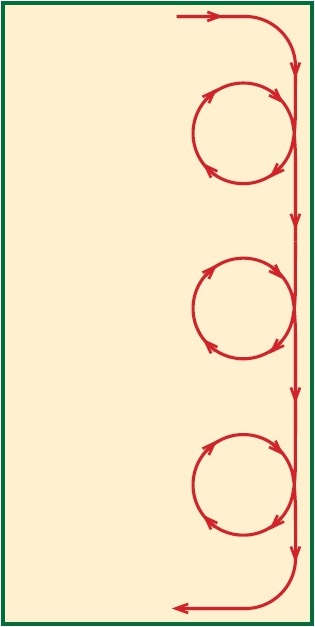
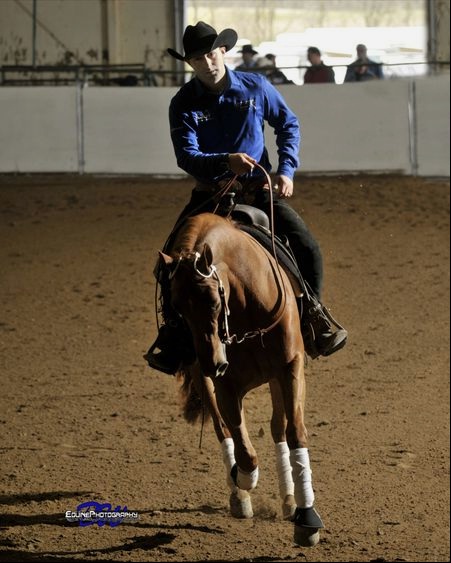 Photo: Dieter Wahr Equine Photography
Photo: Dieter Wahr Equine Photography